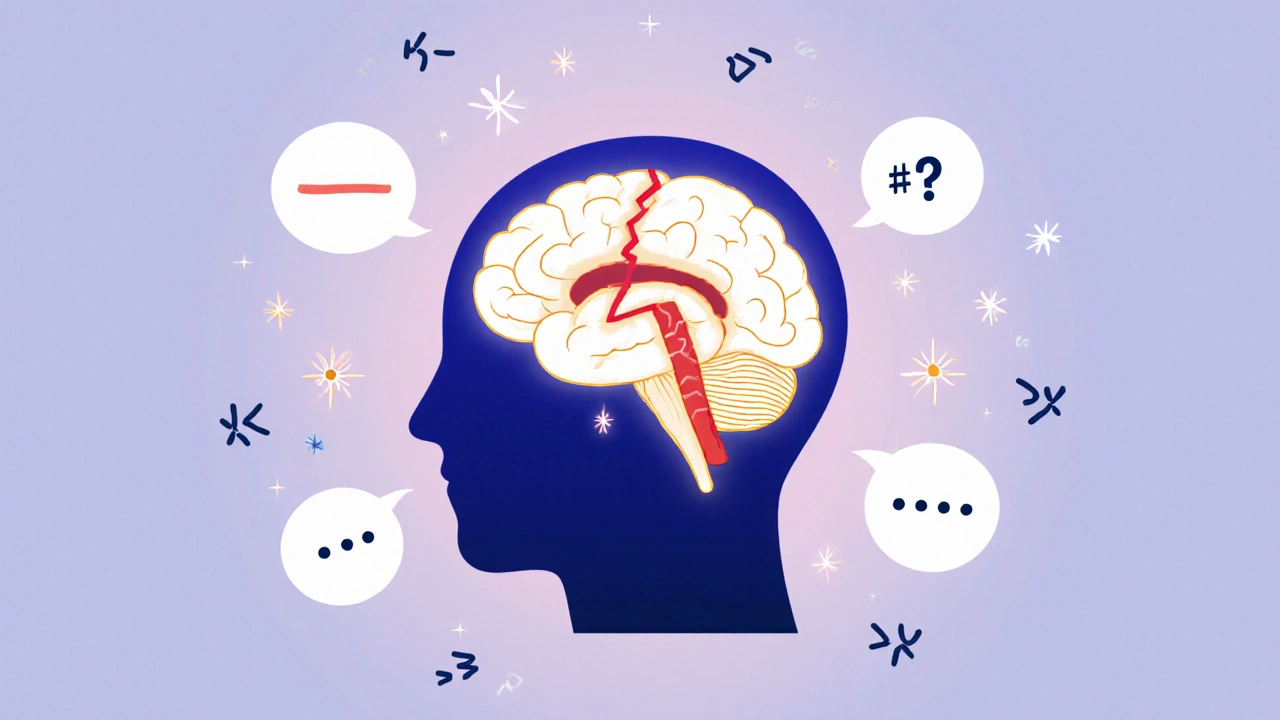When navigating language after stroke, the ability to understand and produce spoken or written words following a cerebrovascular accident. Also known as post‑stroke language, it often determines everyday independence and quality of life.
One of the most common hurdles is aphasia, a language disorder that can affect speaking, listening, reading or writing. Aphasia isn’t a single condition; it ranges from mild word‑finding trouble to profound loss of speech. Because aphasia directly shapes language after stroke, early assessment is critical. Therapists use standardized tests to pinpoint which language components are most affected, then craft a plan that tackles those gaps.
Recovery hinges on three interrelated forces. First, brain plasticity, the brain’s ability to reorganize neural pathways, fuels relearning. Second, speech therapy, a targeted, intensive program that drills language skills, accelerates plastic changes. Third, the patient’s environment—supportive family, consistent practice, and realistic goals—creates the context for gains. In practice, these forces generate a feedback loop: therapy stimulates plasticity, plasticity improves language, and better language encourages more therapy participation.
Clinical evidence shows that intensive, task‑oriented speech therapy improves naming, sentence formulation and comprehension faster than occasional sessions. Therapists often blend conventional exercises with technology‑assisted tools like tablet apps, which provide instant feedback and keep motivation high. The goal isn’t just to restore lost words; it’s to rebuild functional communication—whether ordering a coffee, signing a lease, or chatting on the phone.
Beyond formal therapy, neurorehabilitation embraces a broader suite of interventions. Physical exercise, for example, boosts blood flow to the brain and supports plasticity. Cognitive training sharpens attention and memory, both essential for language processing. Some clinics add music‑based therapy, which taps rhythm and melody to bypass damaged language networks and spark recovery.
Family members play a surprisingly active role. Simple actions—mirroring speech, giving ample time to respond, using visual cues—create a rich linguistic environment that reinforces therapy gains. Training caregivers in communication strategies reduces frustration and encourages the person recovering to keep trying. Even a brief daily “conversation hour” can add up to meaningful progress over weeks.
When setting goals, it helps to break language tasks into measurable steps. Instead of “talk more,” aim for “name three objects in the kitchen without prompts” or “write a short email using four complete sentences.” Tracking these micro‑milestones provides concrete evidence of improvement and fuels motivation.
Recovery timelines vary. Some individuals see rapid shifts within the first three months, while others continue to make steady gains well beyond a year. The key is consistency—regular practice, periodic therapy reviews, and adjustments based on evolving strengths and weaknesses.
What you’ll find in the article collection below reflects this holistic view. From deep dives into aphasia types to practical guides on home‑based speech drills, each post tackles a specific angle of language after stroke. Whether you’re a survivor, a caregiver, or a clinician, the resources aim to give you clear, actionable steps to move forward.
Posted by
Jenny Garner
7 Comments

Explore how stroke impacts speech, language, and communication, learn to recognize aphasia, dysarthria, and apraxia, and discover practical therapy steps for recovery.
read more